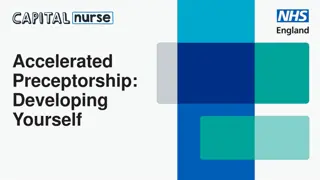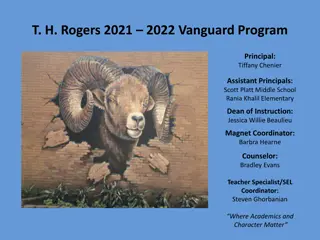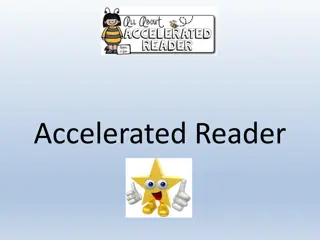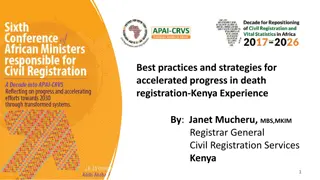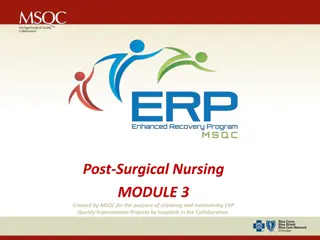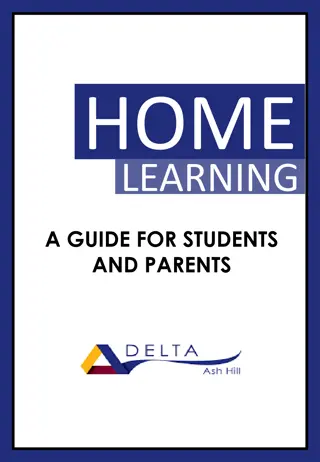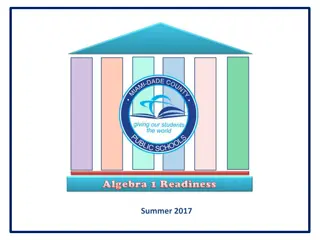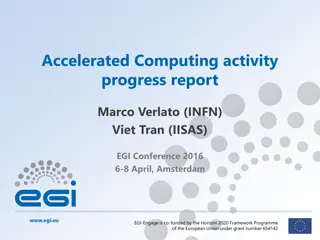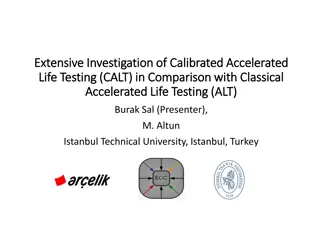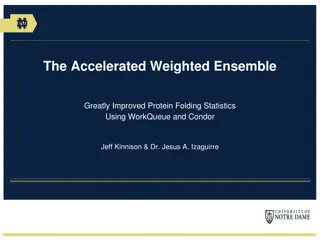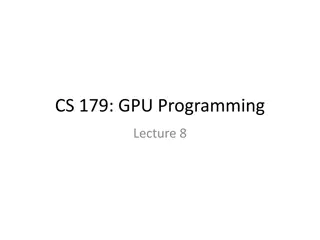Accelerated Community Learning Program
Celebrating 50 years of history, the program offers targeted, accelerated, and community-based learning opportunities for students worldwide. With various course options and a focus on mastering foundational math concepts, students can progress efficiently towards higher education goals. Lessons learned in program development emphasize small group interactions and innovative PR strategies, ensuring student success and engagement.
Download Presentation

Please find below an Image/Link to download the presentation.
The content on the website is provided AS IS for your information and personal use only. It may not be sold, licensed, or shared on other websites without obtaining consent from the author.If you encounter any issues during the download, it is possible that the publisher has removed the file from their server.
You are allowed to download the files provided on this website for personal or commercial use, subject to the condition that they are used lawfully. All files are the property of their respective owners.
The content on the website is provided AS IS for your information and personal use only. It may not be sold, licensed, or shared on other websites without obtaining consent from the author.
E N D
Presentation Transcript
Extending Primo beyond your ILS data source : including EAD and Graphic Sources Janet Lute ILS Coordinator Princeton University Library IGeLU 2014 Oxford, England
Background Goal is to include numerous and disparate sources of data that never were and never will be in our ILS Many sources belong to Rare Books and include Finding Aid records, visual materials, and local senior thesis records Live with Primo since Sept. 2011 Direct hosted on 4.7 Work in close collaboration with Technical Staff from Rare Books and with our web developer A lot of this work was trial and error and I learned lots about the Back Office
EAD and Hierarchy Many finding aid records are hierarchical in nature Determine how far down the hierarchy you need to go for separate records Currently we have records for levels 2, 3, 4 and 5 o Level 1 F. Scott Fitzgerald Papers. This is the container, no individual record to links to it o Level 2 Series 1: Writings o Level 3 Series 1A: Novels o Level 4 The Beautiful and Dammed o Level 5 Book I, A Pleasant Absurdity of Things Most collections are not as complex as this
Finding Aid record and hierarchy Primo record at lowest level Link takes you to the next level up
How to get from EAD to PNX Convert EAD to a generic format (done by staff in Rare Books) Then map this to PNX via Primo normalization Example of what the XML record looks like
Normalization Rule Set Tips To get started do a copy from xml-template One set of rules for all xml data sources Have a test record in right from the beginning and test each field as you go along Be consistent in the use of local fields Think about what fields are used in your main NR I have a spreadsheet that summarizes field use
Normalization Rule Sets Set up a new rule set for EAD using the usual sections By far the hardest section was control Display Library Level Availability needed care Terminology was an issue especially the Primo use of the term Source
File Splitter Mapping table File Splitter Set up an EAD File Splitter Mapping table File Splitter Params This sets up the mapping from the xml file for the Pipe and creates separate records
FrontEnd Display Fields Code Table Many EAD labels share the ones used by Marc Subject, Author/Artist, Title, etc. required no action Local display fields used by EAD needed to be added Really need to pay attention to what you already have Might Notes and Summary really be the same thing
Full Display Labels Code Table Only the newly added labels needed to entered
Use of local fields Ex Libris provides up to 50 local fields for Search, Display etc. Follow the set up of Collection Title through various stages NR Search section NR Display section FrontEnd Display Fields Full Display Labels View Brief Results Tile Primo Front End Display
Views For initial Testing I created a separate view Goal is to have all data sources in one view Brief display tile think about what data elements to display, has to make sense for all data sources First line includes Title, and Title of Collection Second line includes Author/Artist EAD record has title + title of collection but no author Voyager sourced record has a title and an author
Views Full display Full display tile may need some specific fields adding Again you are balancing the demands of different interested parties, and compromises may need to be made Some of the new display labels needed for EAD
Data Sources Used to define sources of data for the pipe You want separate sources so that you can control the pipes The top three are for local data sources, bottom one is for our regular Voyager pipe
Data Source for EAD Do this in the right order: file splitter, then data source, then pipe setup Online Primo help can be useful but it usually does not link tasks together
Pipes List Set up a pipe to load and delete EAD print, plus a pipe to load and delete EAD visuals, thesis, etc. Each data source can have its own schedule and run independently of your other data sources You may also want to delete the entire source and reload
Pipe configuration This pipe looks for records in a *.tar.gz format in the directory called /exlibris/primo/data/thesis Bug in 4.6/7 and gz format is not being recognized; use tar or tar.gz. Fixed in 4.8 Not scheduled yet but will probably load records weekly Indexing and hotswapping processes is shared by all pipes
EAD example record XML Record Primo Full Display Finding Aids Page
Senior Thesis example Senior Thesis resource type set up
Locations & Availability Hardest part and most controversial Some factions wanted detailed item requestability directly from Primo Others felt that a link to the correct part of the Finding Aid and hence to Aeon system for requesting This part requires custom coding Not quite there yet but leaning toward the 2nd option Simpler for patrons Fewer changes to XML records and smaller records
Locations & Availability Request Link takes you to the Finding Aid Request This Box will invoke Aeon
Visuals/Senior Thesis Requesting Visuals & Senior Thesis have far simpler records with usually one item No finding aids, links directly to the Aeon System Aeon login screen
What was the point? We have 28 records for The beautiful and damned by F. Scott Fitzgerald EAD Finding Aid Record Voyager sourced records
What is left to do? All records not loaded yet; will be over million initially for the EAD material Need an ongoing pipe for new and edited records Locations & Availability tab is still being refined local customizations here May still refine the number of levels for which we create records Some top level EAD records have Voyager records, we will suppress these
I will supply more details on request including normalization rules and the XML file format Thanks to Kevin Reiss for the Primo customizations kr2@princeton.edu Janet Lute jelute@princeton.edu Questions?


